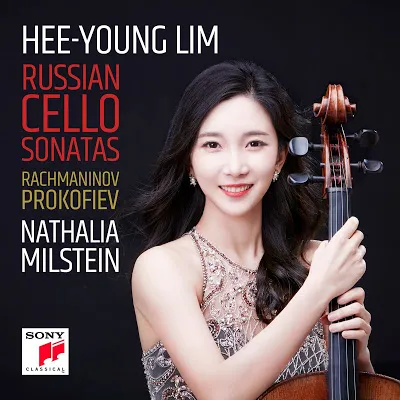
Russian Cello Sonatas Rachmaninov: Cello Sonata in G minor, Op. 19; Vocalise, Op. 34 No. 14 - Lentamente; molto cantabile; Prokofiev: Cello Sonata in C, Op. 119 Hee-Young Lim (cello); Nathalia Milstein (piano) Sony Classical 80358118497 67:34 mins
With at least four available alternative albums pairing these cello sonatas, there’s a sense of déjà vu. Yet the ‘odd’ coupling works. Though Prokofiev bridled if anyone pointed out similarities between his and Rachmaninov’s music, he admitted being influenced by the older composer early in his career; and Prokofiev’s Cello Sonata, though a late work, was written in a deliberately conservative idiom.
Hee-Young Lim offers attractive singing tone on a beautiful Guarneri instrument, which she plays with immaculate technique and intonation. Her delivery, though, is rather relentlessly cantabile, suitable for the closing Vocalise but less so for the more dynamic sonatas. More variety of colour from her bow would have helped characterise the first and final movements of the Rachmaninov, while Nathalia Milstein’s rather loose-limbed piano playing makes the music seem rather rambling. In livelier movements though, as in Rachmaninov’s galloping scherzo, their performance becomes compelling with very fine ensemble. The Prokofiev Sonata, where they are more strict in matters of tempo, benefits from being less of a vehicle for gorgeous cello tone, though that does not preclude a wonderfully resonant bottom C at its opening, highlighting the excellent recorded sound.
These are decent performances, but other recordings show there’s more to these works. In the Prokofiev, Raphael Wallfisch and Peter Donohoe (on Somm) eloquently reveal the first movement’s more reflective and poetic qualities. And anyone wanting this particular pairing will find compelling accounts from Torleif Thedéen and Roland Pöntinen on BIS, particularly vigorous and characterful in the Rachmaninov.
Daniel Jaffé